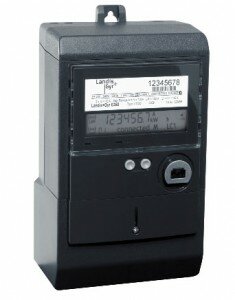Tracking Energy Use
Monday, September 20th, 2010I’ve decided to write this blog in a somewhat different format than usual. I thought I should share some of my observations in tracking energy use since I’ve been involved for a little while now in installing, analysing, presenting and monitoring ‘real time tracking systems’ (or ‘carbonrealtime’) as we refer to it.
I was actually really shocked to learn recently -when an environment officer at one of the councils posed the question to a small business audience, whether they knew how much power they used, how much their tariff rates were or how much their actual bills were- that most didn’t have a clue. Out of about 35 people only one knew. The rest had no idea! Even more surprising was the fact that a few of these audience members were accountants and financial advisors. They just automatically pay their bills both at home and for their businesses. How are you supposed to reduce your electricity use, cost and of course greenhouse emissions if you don’t even know (or care) how much you use and pay?
So there are a number of ways to overcome this problem of knowing your electricity use. Starting with the analysis of basic yearly use of the bi or three monthly bills you can get a bit of an idea what’s happening throughout the year. However, many of the larger sites already have interval electricity meters. These record power consumption every 15 minutes and eventually send some aggregated data to the suppliers. This information can be requested free of charge from the electricity retailer and we usually do this on our client’s behalf. Having access to at least a year’s worth of data is extremely useful. If you know how to compile the data and what to look out for one can get a really good idea of a site’s usage profile and how to save energy.
If your site doesn’t have interval metering another option is to install temporary electricity loggers on various distribution boards. Again the data obtained from this is very useful and we often do this for specific circuits at some of the sites. However, the latest revolution is in online tracking. We have developed an affordable real time tracking system that is extremely easy to install and then it’s plug and play. Once set up the device sends the data through the internet and can be accessed from anywhere. The user-friendly interface on the monitor presents all the data in an easy to understand language with graphs and images that don’t need a physics degree to understand. Some of our systems have everything incorporated such as water, gas, electricity consumption/generation and temperature. All these are highly valuable tools for any facilities or environment managers and even for educational purposes.
The ‘carbonrealtime’ systems are used in households and offices greatly reducing energy consumption but schools and council buildings have also installed them to keep an eye on their energy use. From some of these systems a few sites have already identified huge wastage that occur out of operating hours during the night or weekends. The findings from larger council site had effected changes in the HVAC BMS in relation to public holidays, starting and finishing times or discovering faulty equipment or in one instance double charging of electricity over 12 years! Lowering the base load is another useful outcome of using such a system. The tracking system can also be employed to overcome electricity apportioning disputes between tenants, which we often have to investigate for our clients.
With electricity prices going up constantly and with the emphasis on reducing greenhouse emissions; monitoring your electricity consumption is no doubt one of the most important steps towards averting huge electricity bills and the threats of climate change.







